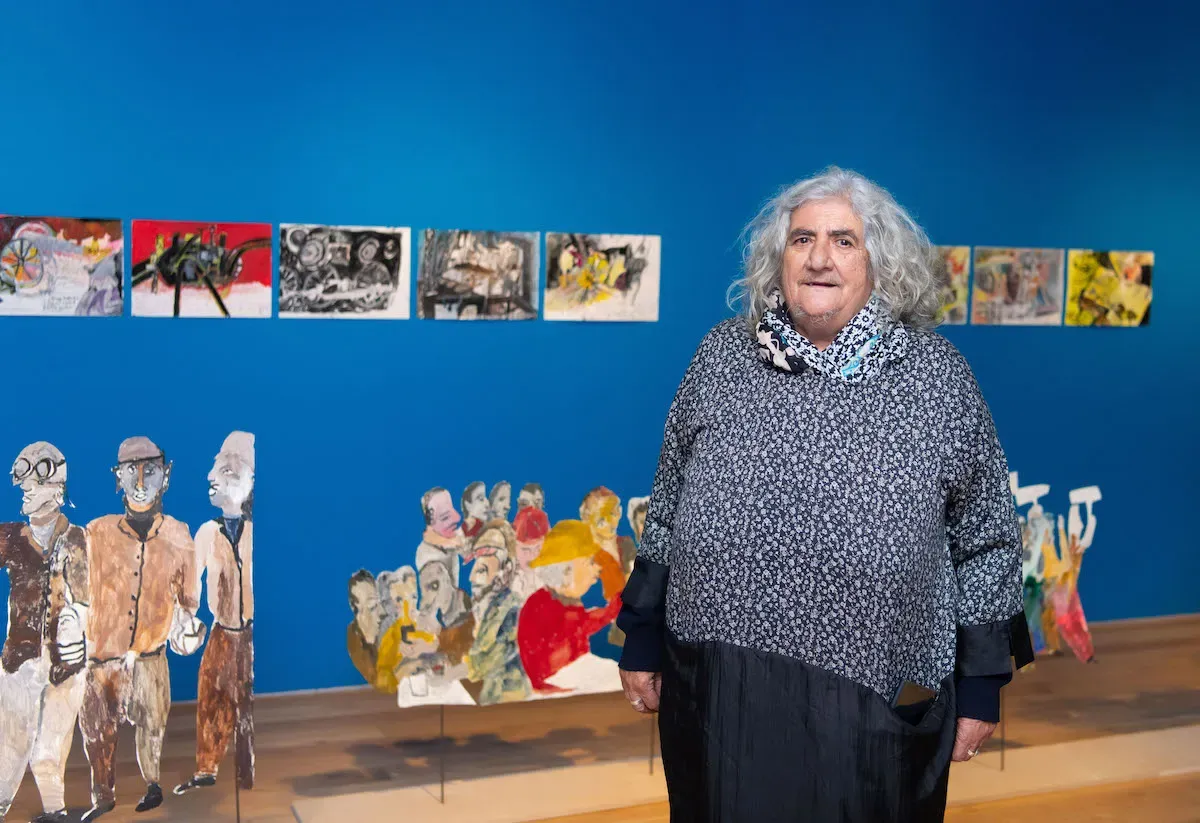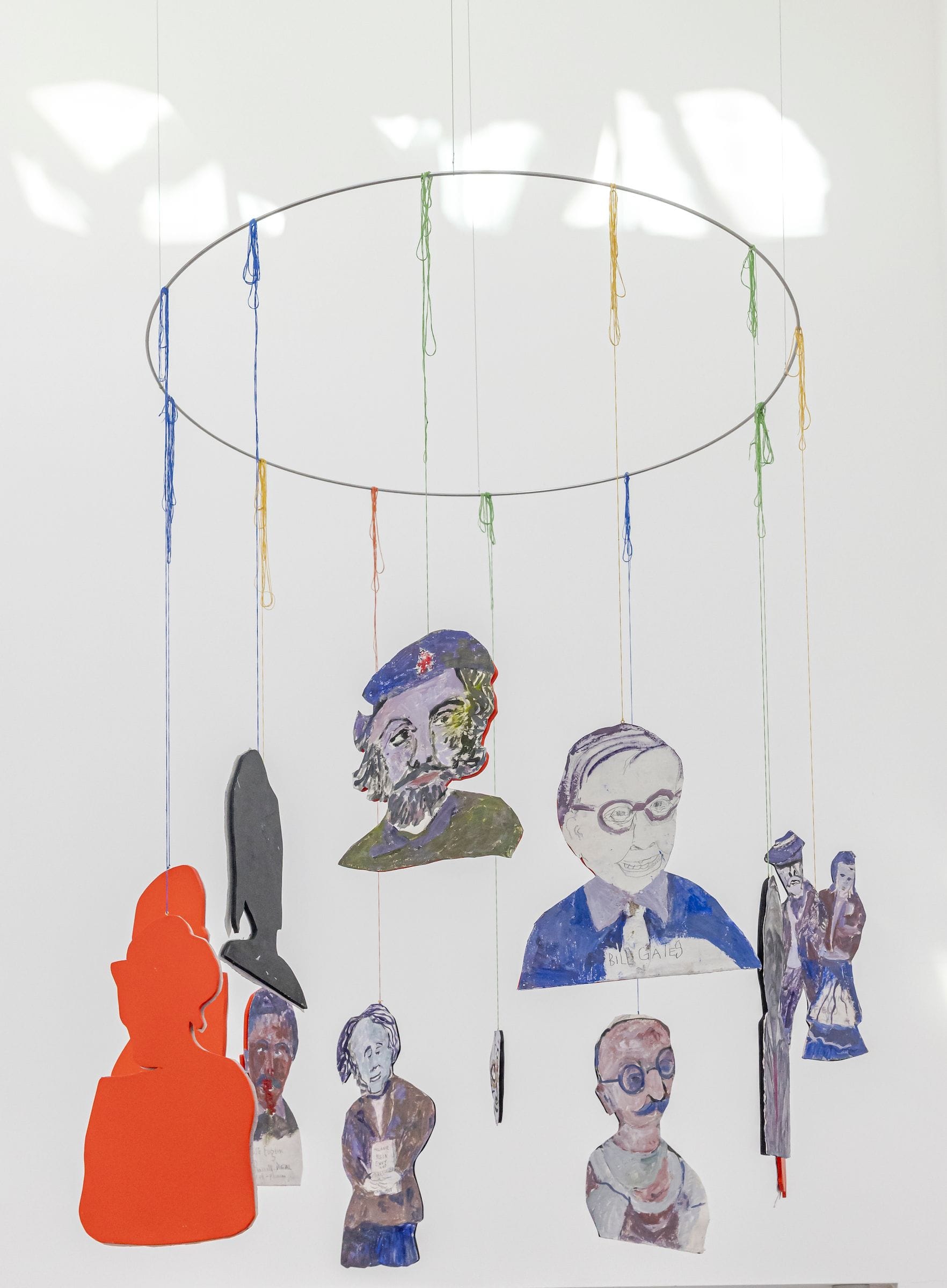Born in Cairo to an Armenian family, Anna Boghiguian is not just an artist but also an educator. Her artworks draw from her diverse experiences across multiple cultures and lands., in which exposure to diverse populations and forms of life inspired her archive of historical, political and societal metaphors that are filled with character and powerful provenance. The themes of Boghiguian’s works are shared with the United Nations Sustainable Development Goals of Quality Education and Peace, Justice, and Strong Institutions.
Having lived in Egypt before her move to Canada, Boghiguian was no stranger to wild shifts in societal structures and differing forms of governance. Born in 1946, Boghiguian’s early life coincided with the final years of the Egyptian royal family’s rule under British colonialism. Only a few years after the Egyptian revolution took place, Egypt saw its first foray into sovereignty in a modern sense with the seizure of the Suez Canal in 1956. Boghiguian, then in her early 20s, moved to Montreal to study music and art. Due to hearing loss, she focused on studying art. During her time in Canada, the artist began observing the shifts in Canadian society on her frequent trips between Toronto and Montreal. While making observations through the passage of time and between the vastly differing cultures and cultural norms between life in Quebec and Ontario during the late 70s, She began to specialize in a beautiful form of historical and societal storytelling.

“My life is basically a lot of travelling, and my travels are part of my life. Even when in cities I always walk a lot, which I think has a strong impact on my work. I made brooches in different parts of the world which were linked to my experiences of the place and then sold them to finance my travel to the next place.", Boghiguian said in an interview with Hassan Khan for the American University in Cairo.
Most recently, her series The Times of Change exhibition at The Power Plant in Toronto with a centrepiece installment, Chess Game, depicts many Austrian individuals whose actions caused ripples throughout the globe. These include historical figures such as Marie Antoinette and Sigmund Freud. Through stylized encaustic illustrations of the historical figures, the artist would suspend some of these colourful drawings over the monochrome plexiglass tiles. In contrast, others would be placed as pieces on the board. These figures would then inherit the chess pieces' roles, with queens and knights occupying the board in a huge metaphor for global politics and the domino effects of events that become a zeitgeist on the world stage.
Boghiguain’s art shows us that most revolutions do not occur in isolation, but rather as a result of many inexplicable catalysts that resulted in the toppling of giants and giving rise to new orders. These fill power vacuums left by the individuals remembered in the annals of time as symbols of their focused effect on the world. Another of the artist’s works is The Uprising, a collection of revolutionaries hung up like wind chimes. These characters represent their propensity to deliver change and the inevitably of revolutionaries in a world of powerful forces working to maintain a societal status quo. Images of Che Guevera, Mohandas Karamchand Gandhi and others hang together on pieces of twine. This work is not meant to idolize these figures, but rather remind the audience that these people symbolize movements brought together through the efforts of millions.

Through years of observation and interactions with the world, Boghiguian tells her audiences that it is a far more interconnected space than one would otherwise imagine. While some figures seem to have no correlation with others, the colourful caricatures of these leaders are used to show the flow of ideas, systems and the consequences of events. The artist reminds us that despite the little that we know, the answers to our worries can be found by learning about the past and the efforts made by our forebearers to overcome their tribulations. Boughguian’s pieces are an effort to educate and not to make the mistakes of the past become obstacles to our future.
